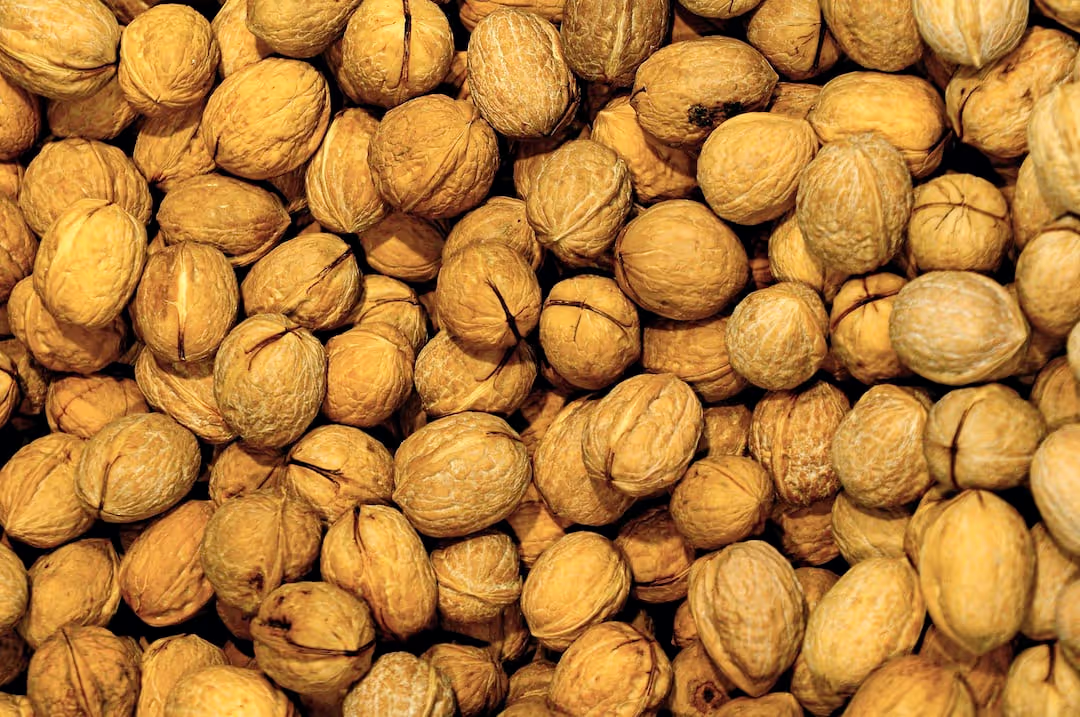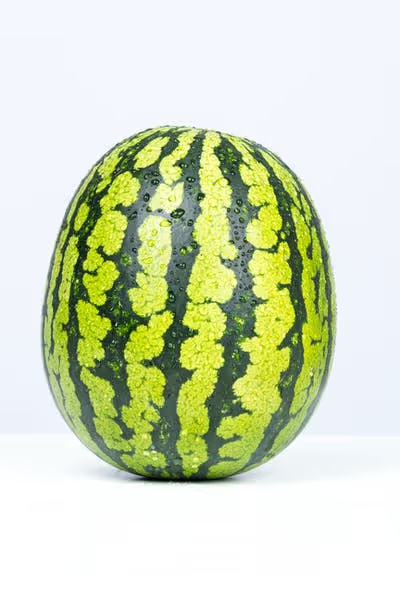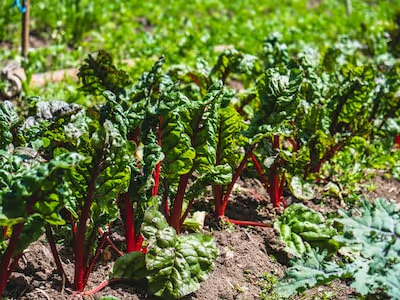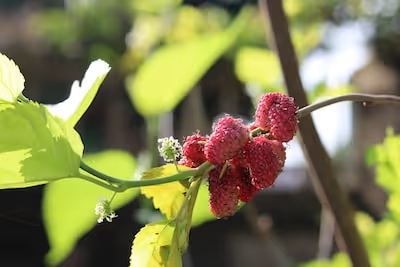Growing Hickory Nut Trees: A Step-by-Step Gardener's Guide

Growing Hickory Nut
Start growing hickory nut trees from fresh, viable nuts gathered in autumn to yield richly flavored harvests. Plant your seeds 1-2 inches deep in fertile, well-draining soil and provide steady moisture until germination occurs the following spring. Learn how to nurture these hardy, rewarding trees and await the bounty of buttery, nutritious nuts for years—read on to savor your own homegrown hickory harvest.
Cheatsheet: Hickory Nut Tree Growing Guide
🌳 Picking Optimal Varieties
- Carya ovata (shagbark): rich flavor, zone 4–8
- Carya laciniosa (shellbark): large nuts, zone 5–8
- Carya illinoinensis (pecan): faster growth, zone 6–9
🌞 Site Selection & Soil
- Full sun (6+ hrs/day)
- Deep, well-drained loam
- pH: 6.0–7.5
- Space: 40–80 ft (12–24 m) apart
🔮 Propagation Methods
- Soak fresh nuts 2–3 days
- Stratify in moist sand, 34–40°F (1–4°C), 90–120 days
- Direct sow in fall or plant stratified seeds in spring
- Grafting boosts nut quality
🧑🌾 Step-by-Step Planting
- Dig hole 3x root width, 18 in (45 cm) deep
- Place seed/root ball, pointy end down
- Backfill with native soil, firm gently
- Water deeply, mulch 2–3 in (5–8 cm)
- Stake if windy
💧 Water & Fertilize
- 1 in (2.5 cm) water/week—first 3 yrs
- Compost or 10-10-10 fertilizer, spring
- Avoid fertilizing past midsummer
✂️ Care & Pruning
- Prune in late winter for strong single leader
- Remove damaged, crossing branches
- Guard trunk from rodents
🐿️ Pests & Problems
- Monitor for hickory bark beetle, weevils
- Net young trees to deter squirrels
- Powdery mildew: promote airflow
⏳ Harvest & Nutrition
- Harvest nuts after hulls split, Sept–Oct
- Dry nuts 2–3 weeks
- Rich in omega-3s, protein, fiber
- Mature trees yield for 100+ years
🧰 Tools and Products You'll Need
- Hickory nut seeds/grafted saplings
- Shovel
- Mulch (wood chips/leaves)
- Watering can/hose
- Tree guards (wire mesh)
- Pruning shears
- Compost or balanced fertilizer
-
Growing Hickory Nut Trees: A Step-by-Step Gardener’s Guide
I grow hickories for flavor, for shade that feels like cathedral light, and for the ritual of cracking sweet, smoky kernels by the woodstove. They reward patience, and they do it for a century or two.
Quick snapshot: Growing Hickory Nut at a glance
- Best species for eating: shagbark hickory Carya ovata and shellbark hickory Carya laciniosa.
- Hardiness: shagbark zones 4 to 8, shellbark 5 to 8.
- Sun: full sun for nut production.
- Soil: deep, well drained loam; pH 6.0 to 7.5.
- Spacing: 40 to 60 feet apart 12 to 18 meters.
- Pollination: wind, late spring; plant two unrelated trees for consistent crops.
- Time to nuts: seedlings 10 to 20 years, grafted 7 to 10 years.
- Mature size: 60 to 80 feet tall 18 to 24 meters, with a commanding crown.
- Water: 1 inch per week 25 mm in the first three summers.
- Transplanting: tricky due to a deep taproot, so plant where it will live.
Why hickory, and why now
The flavor stands up to smoke, butter, maple, bourbon, and dark chocolate, and the shells make legendary barbecue coals. The wood is prized, yet I value the tree even more for mast that feeds owls, turkeys, and a battalion of squirrels.
“Heavy seed crops are produced at intervals of about 2 to 3 years.” USDA Forest Service, Silvics of North America
The Morton Arboretum notes lifespans that run past 200 years, which means you plant for your grandkids too. That is time well spent.
Step 1. Choose the right species and cultivar
- Shagbark hickory: classic sweet nut, moderately thick shell, shaggy bark that peels in strips.
- Shellbark hickory: larger nut and husk, very thick shell, rich flavor, prefers deeper bottomland soils.
- Avoid bitternut Carya cordiformis for eating, as the name tells the tale.
- Hicans hickory x pecan hybrids: easier cracking and earlier bearing in some selections.
- Seek named cultivars for quality and productivity, for example ‘Grainger’ and ‘Porter’ shagbark or ‘Keystone’ shellbark.
I plant two different cultivars to sync pollen shed and stigma receptivity, which steadies the crop in windy springs. Wind does the work, you just provide genetic diversity.
Step 2. Pick the site and prep the soil
Choose the sunniest, deepest soil on the property, away from buildings and overhead wires. Hickories dig straight down with a taproot and will sulk in compacted clay or wet feet.
- Target pH 6.0 to 7.5 and amend based on a soil test.
- Rip or broadfork planting strips to 18 inches 45 cm if soil is tight.
- Space 40 to 60 feet 12 to 18 meters, and keep the mulch circle free of turf for 3 feet 1 meter radius.
They tolerate juglone better than most fruit trees and produce some allelopathic compounds themselves. I underplant with pawpaw, spicebush, sedges, and ferns that shrug off juglone.
Step 3. Start from seed the right way
- Collect freshly fallen nuts in autumn when husks split naturally, then remove husks and discard floaters in a bucket test.
- Cold stratify 90 to 120 days at 34 to 41 F 1 to 5 C in moist peat or sand inside a rodent proof container.
- Plant outdoors in spring at a depth 2 to 3 times the nut diameter 5 to 8 cm in a wire protected bed or very deep pot.
- Label by mother tree, since flavor and shell thickness vary wildly among seedlings.
“Hickories are difficult to transplant because of the taproot.” The Morton Arboretum
I use tree shelters or hardware cloth cylinders the first two years to beat squirrels and voles. The seedling will look slow while the taproot punches downward, then it hits another gear.
Step 3B. Or plant a seedling or grafted tree
Bare root stock goes in while dormant late fall or very early spring, and container trees anytime the soil is workable. Choose trees with a visible root flare and a single straight leader.
- Dig a wide hole, keep the native soil in the backfill, and set the flare at or slightly above grade.
- Water deeply and mulch 3 to 4 inches 7 to 10 cm, keeping mulch off the bark.
- Stake only in windy sites and remove the stake after one year.
- Use a trunk guard to prevent vole girdling and sunscald.
Grafted trees shorten the wait to nuts and fix the flavor profile. I inspect the graft union for a clean, well healed line and a strong leader above it.
Step 4. Pollination strategy that works
Hickories are monoecious with male catkins and female flowers, and they show dichogamy where bloom timing is staggered. Plant two unrelated trees or two cultivars with overlapping bloom windows to avoid blank shells.
A light breeze in late spring does the lifting, so give trees open air and full sun. I skip bee box logistics here because pollen is wind carried.
Step 5. Water and nutrition
In years one to three, give 1 inch of water per week 25 mm during dry spells, delivered slowly at the dripline. Deep irrigation trains roots to chase moisture and pays off in drought years.
Fertilize only if the soil test suggests it, and keep nitrogen modest to avoid rank growth with fewer nuts. I prefer a slow release balanced fertilizer in early spring paired with a thick leaf mulch that feeds the mycorrhiza.
Step 6. Training and pruning
Train a central leader and select 4 to 6 well spaced scaffold branches with wide crotch angles. Prune in late winter while dormant, removing crossing, broken, or rubbing wood.
Do not top these trees. A clean cut outside the branch collar and a sharp tool beat a bucket of sealant every time.
Step 7. Pests, diseases, and how I stay ahead
- Pecan weevil Curculio caryae: causes wormy kernels; break its cycle with clean harvest, poultry under trees, and timely ground sanitation.
- Hickory shuckworm Cydia caryana: tunnels husks; remove and destroy infested shucks after harvest.
- Walnut caterpillar Datana integerrima: handpick clusters or use Bt on young larvae.
- Hickory bark beetle Scolytus quadrispinosus: more active during drought; keep trees unstressed with deep watering.
- Leaf diseases like anthracnose and powdery mildew are usually cosmetic; promote airflow and avoid overhead irrigation late in the day.
“Outbreaks of hickory bark beetle are often associated with drought and other stress.” USDA Forest Service
Resist carpet bombing with insecticides, since predators and parasitoids do good work here. Healthy, unwatered lawn under the canopy is a pest factory, while mulched soil full of leaves is the opposite.
Step 8. Harvest, curing, and storage
Harvest when husks split and nuts drop in early fall, then gather daily to stay ahead of squirrels and weevils. I dry nuts on screens or trays for 2 to 4 weeks at 60 to 70 F 15 to 21 C with moving air.
Store in shell in a cool place or refrigerate at 32 to 40 F 0 to 4 C for up to a year. For long storage, crack and freeze kernels in airtight bags and they stay vivid for 2 years.
A stout lever style cracker saves hands, and a pick with a thin hook pulls out the sweet meat intact. The shells go to the smoker for ribs and trout.
Troubleshooting the common headaches
- Slow growth: shade or wet soil; open the canopy and improve drainage with organic matter on top, not double digging.
- Empty shells: poor pollination or drought during bloom; add a second cultivar and water in May to June.
- Blackened kernels: weevil or shuckworm damage; harvest promptly and solarize fallen nuts and shucks under clear plastic.
- Leaf scorch in July: heat plus shallow roots; extend the mulch ring and water deeply before heat waves.
My field notes that might save you a season
I have had better first year survival with fall planting into still warm soil than with spring mud. I top dress with 2 inches 5 cm of leaf mold every November and never see transplant shock.
Wildlife respect a 5 foot 1.5 m wire cylinder more than plastic tubes here, because deer push on tubes for sport. A single strand of peanut buttered flagging on an electric fence resets the conversation fast.
Best choices for different goals
- Top flavor: shagbark cultivars ‘Grainger’ and ‘Porter’ have full, maple friendly kernels.
- Easier cracking: hicans like ‘Burton’ and ‘Pleas’ tend to open cleaner in my hands.
- Heavy soils: shagbark tolerates upland clays better than shellbark, which prefers deep alluvial sites.
- Earliest bearing: grafted trees from reputable nurseries beat seedlings by several years.
Commercial buying guide for Growing Hickory Nut
Order bare root stock for shipping in late fall or very early spring, and container stock once frost leaves the ground. Choose reputable nurseries that list rootstock or parentage, bloom timing, and disease notes.
- Look for a straight central leader, a visible root flare, and no circling roots in containers.
- Caliper around 5 to 7 tenths of an inch 12 to 18 mm on grafted trees strikes a sweet spot of vigor and ease of establishment.
- Ask for pollination charts to match cultivars, or buy a pollination pair bundle when offered.
- Pick up a deep tree pot if you plan to grow your own seedlings, plus a soil test kit and a quality lever style nut cracker.
Confirm the warranty on grafted stock and clarify replacement terms for winter loss. I always photograph the tree at planting with a tag visible to keep records straight.
Soil life, mulch, and the quiet partnership
Hickories form strong mycorrhizal alliances, which boost water and mineral uptake and harden trees against stress. I leave autumn leaves where they fall under the canopy and top with chipped ramial wood for a living, fungal mulch.
Avoid tilling inside the dripline and skip high salt fertilizers that scorch fine roots. The forest floor recipe beats any bagged product here.
Companions and spacing under the canopy
Plant juglone tolerant companions like pawpaw, spicebush, river oats, Christmas fern, and wild ginger. Keep blueberries, tomatoes, and azaleas outside the dripline since they complain near Juglandaceae.
Numbers that matter to set expectations
- Germination after proper stratification often exceeds 70 percent in my beds, provided rodents are excluded.
- Year three height in full sun on decent loam runs 24 to 36 inches 60 to 90 cm with deep watering, then it jumps in year five.
- Full bearing arrives around year 12 to 20 on seedlings and 7 to 10 on grafted trees, with heavy crops in some years and light in others.
“Alternate bearing is common, with abundant crops followed by light ones.” University Extension literature on Carya species
Plan your pantry around the on years and enjoy the wood smoke on the off years. That rhythm feels right.
Field-tested calendar for Growing Hickory Nut
- Winter: pruning and ordering stock; stratify collected nuts.
- Early spring: plant bare root trees; sow stratified nuts; apply slow release fertilizer if soil test recommends it.
- Late spring: monitor bloom and water during dry spells.
- Summer: deep water during drought; scout for caterpillars and beetle stress.
- Early fall: harvest daily as nuts drop; dry and cure; clean up shucks to break pest cycles.
- Late fall: plant container trees; refresh mulch; cage trunks for winter.
Citations worth reading
USDA Forest Service, Silvics of North America, Carya species. The Morton Arboretum, Tree Handbook entries for shagbark and shellbark hickory.
University of Missouri Extension and Ohio State University Extension, nut tree culture bulletins. NC State Extension, Carya species profiles.
Frequently Asked Questions about Growing Hickory Nuts
How long before my hickory nut tree bears its first nuts?
Patience is king in the orchard. A hickory tree typically requires 10 to 15 years from seedling to first fruitful harvest. Grafted varieties may slash that wait down to 4 to 8 years, rewarding your patience sooner.
What's the ideal soil type for cultivating vigorous hickory nut trees?
Hickories thrive where the earth breathes deeply—well-drained, loamy soils rich with organic matter. Steer clear of heavy clays or overly sandy terrains; nurturing the right soil sets the stage for long-lived trees and flavorful nuts.
Can I plant hickory nuts directly into my garden soil?
Absolutely. Plant fresh hickory nuts about 2 to 3 inches deep in autumn, allowing nature's winter chill to awaken their inner life. Mark placement clearly to protect vigorous young sprouts from hungry wildlife.
Must my hickory nut trees be cross-pollinated to yield nuts?
Indeed, hickory is no lone ranger. To bear rich, abundant nuts, cross-pollination is essential. Ensure at least two different cultivars are within pollinating distance to spark abundant yields.
When are hickory nuts ripe and ready to harvest?
Nature sends clear signals. Hickory nuts mature in the fall; look closely as their outer husks split open, revealing the treasure within. Harvest swiftly once nuts hit the ground, as wildlife savors their irresistible taste just as humans do.
How should I store my freshly harvested hickory nuts?
Cool and dry is the philosophy here. Spread harvested nuts out to dry thoroughly, then place them in breathable sacks in a cool, ventilated location. Stored this way, your harvest maintains peak quality several months, sustaining you until spring returns.
Growing Hickory Nut rewards the patient. You’re planting for the long haul—think in decades, not seasons. Set your trees in well-drained soil, give them sun, and expect slow, steady progress. When that first autumn crop drops, the taste is pure, old-world richness. Keep your eye on pests, water young trees deeply, and let nature handle most of the rest. If you’re craving more edible backyard projects, check out how to grow loquat or experiment with buffaloberry.
Growing Hickory Nut means playing the long game, but what you get—shade, wildlife, and nuts you’ll never find at the grocery store—pays you back every single year. Plant, tend, wait. The payoff is worth it.
Organic Hickory Nut Cultivation: Proven Strategies for Optimal Yield
Soil Enhancement Practices
- Integrate leaf mold annually to build beneficial fungi and microbes.
- Apply well-aged compost around tree base each spring, improving nutrient retention.
Effective Pest Management Methods
- Attract beneficial insects (ladybugs, lacewings) via companion planting (dill, fennel).
- Spray neem oil bi-weekly during early growing season to control aphids and weevils organically.
- Install bat boxes nearby; a single bat consumes over 1,000 pest insects nightly.
Water Conservation Techniques
- Mulch base with straw or wood chips (8-10 cm / 3-4 inches deep) to retain moisture.
- Implement drip irrigation to deliver water directly, reducing usage by up to 60% compared to sprinklers.
- Collect rainwater runoff in barrels to sustainably supply watering needs during dry periods.
Improving Nut Production Naturally
- Add potassium-rich wood ash sparingly in autumn to promote nut setting and maturity.
- Encourage pollinator populations by planting native flowering herbs nearby.
- Selectively prune dense inner branches annually to maximize sunlight penetration and photosynthesis efficiency.
Health and Nutritional Benefits
Hickory nuts provide protein, fiber, magnesium, and vitamin E, aiding heart health and immune support. Regular consumption supports a balanced, nutrient-rich diet and promotes greater food self-sufficiency.
Find out which plants will thrive in your garden!
Answer a few fun questions and get custom plant recommendations perfect for your space. Let’s grow something amazing together!

start your season





